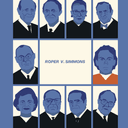
A federal appeals court has permitted a Texas district court to dismiss a death-row prisoner’s claim that Dallas prosecutors unconstitutionally struck Black jurors in his case without considering evidence of racial discrimination that prosecutors had withheld from the defense during state court litigation on the issue.
The February 8, 2021 ruling of the U.S. Court of Appeals for the Fifth Circuit upholds the conviction and death sentence imposed on James Broadnax for his participation in the murder of two men during a 2008 robbery. Broadnax, who was 19 years old, was high on PCP at the time of the crime.
The decision is the latest in a string of more than 150 Texas capital habeas corpus cases in which the appeals court has ruled against death-row prisoners. It has overturned only one death sentence imposed this century in Texas.
The prosecutors in Broadnax’s case attempted to strike every prospective Black or Latinx juror. Broadnax challenged those strikes, arguing that they violated the U.S. Supreme Court’s decision in Batson v. Kentucky, which prohibits removing jurors from service because of their race. The trial judge granted Broadnax’s final Batson challenge, citing “the fact that there are no African-American jurors on this jury and there was a disproportionate number of African-Americans who were struck.” The jury that convicted Broadnax and sentenced him to death was comprised of 11 white jurors and the one reseated Black juror.
Unknown to the defense, Broadnax’s prosecutors had created a spreadsheet of potential jurors to aid in jury selection. That spreadsheet, prepared before jury selection began, bolded the names of prospective Black jurors, but not jurors who were White or Latinx. Prosecutors did not disclose the existence of the spreadsheet at trial or during state post-conviction litigation on the issue.
Dallas prosecutors have had a long history of discriminatorily excluding African Americans from jury service. Dallas District Attorney Henry Wade, whose tenure in office spanned the years 1951 to 1987, once told an assistant prosecutor, “If you ever put another n****r on a jury, you’re fired.” A training manual first written in 1963 instructed county prosecutors not to “take Jews, Negroes, Dagos, Mexicans or a member of any minority race on a jury, no matter how rich or how well educated.” A two-year investigation by the Dallas Morning News into jury selection practices in Dallas County, published in 2005, revealed that prosecutors excluded African Americans from juries at more than twice the rate they challenged white jurors, and that race was the most important personal trait affecting which jurors prosecutors rejected.
In 2003, the U.S. Supreme Court reversed the Fifth Circuit’s refusal to grant Texas death-row prisoner Thomas Joe Miller-El permission to appeal the denial of a claim of jury discrimination in which prosecutors had removed 10 of 11 Black potential jurors in his case. In an 8 – 1 decision, Justice Anthony Kennedy wrote for the Court that the Dallas prosecutor’s office exhibited a “culture of discrimination” that was “suffused with bias against African-Americans.” On remand, the Fifth Circuit again denied Miller-El’s jury discrimination claim. The Supreme Court reversed the circuit court again in 2005, granting relief to Miller-El and noting that “The final body of evidence confirming the conclusion here is that the Dallas County District Attorney’s Office had, for decades, followed a specific policy of systematically excluding blacks from juries.”
Prosecutors did not disclose the jury selection spreadsheet until Broadnax’s case reached federal court. He sought an evidentiary hearing on his jury discrimination claim, arguing that the spreadsheet constituted new evidence that established the race-consciousness of the prosecution’s jury selection practices. He further argued that the spreadsheet provided circumstantial evidence that prosecutors had unconstitutionally exercised their discretionary jury strikes to remove Black jurors because of their race. After withholding the spreadsheet until state post-conviction litigation in the case had been completed, the Texas Attorney General’s office then successfully argued that federal law limited the federal court to considering only the evidence that had previously been presented to the state court.
The District Court asserted that, in light of the Miller-El decisions, “it would have been professionally irresponsible for the Dallas County District Attorney’s Office (in 2009) to have failed to identify the members of the remaining jury venire who were members of a protected class and against whom it might have been preparing to exercise a peremptory challenge.” The Fifth Circuit ruled that Broadnax was procedurally barred from presenting the spreadsheet because it had not been part of the evidence before the state courts and in “no way” fundamentally altered Broadnax’s claim. Quoting the district court, the Fifth Circuit panel asserted that “the spreadsheet ‘does nothing more than indicate that the Dallas County District Attorney’s Office made a point of memorializing the ethnicity and gender of the remaining members of the jury venire prior to the exercise of its peremptory challenges.’”
The prosecutorial accountability website, The Open File, wrote that “even a ‘smoking gun’ spreadsheet of Black jurors can’t make the Fifth Circuit hold prosecutors accountable for racial discrimination in jury selection.” In a February 17 blogpost, the site’s authors observed: “This is a case where the prosecution’s own documents prove they were tracking the race of potential jurors and where the state used its peremptory strikes in its quest to eliminate all potential jurors of color. It just doesn’t get much more absurd or representative of the broken system than that.”
Kyle C. Barry, Prosecutors Excluded Black Jurors in a Death Penalty Case. They’re Getting Away With It., The Appeal, February 25, 2021; Sadie, Update on a TX Batson Case: Even A “Smoking Gun” Spreadsheet of Black Jurors Can’t Make The Fifth Circuit Hold Prosecutors Accountable for Racial Discrimination in Jury Selection, The Open File Blog, February 17, 2021; Sadie, TX: Dallas County Strikes Again With Yet Another Batson-Riddled Capital Case Under Fifth Circuit Review, The Open File Blog, August 27, 2020.



